Xidi Village is located 8 kilometers southeast of Yixian County, about 50 kilometers northwest of Huangshan City. Xidi Village is famous for its typical Huizhou style architecture. The three carvings of Huizhou architecture, namely brick carving, stone carving, and wood carving, are very exquisite. You can see that in Xidi Village.
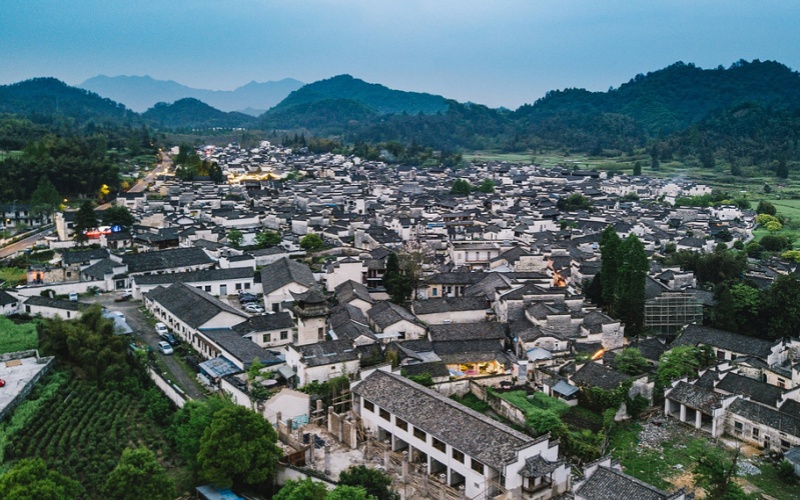
The residents of Xidi Village mostly have the surname Hu, and it is said that they are descendants of Li Shimin, Emperor Taizong of Tang Dynasty(618-907). They changed their surname to Hu to avoid war. The village was first built during the Huangyou period of the Northern Song Dynasty and was very prosperous during the Ming and Qing dynasties. The Ming and Qing architecture we see now still maintains its former grandeur.
What to see?
The ancient village was built in the shape of a boat, spanning three streams. The front and back streams in the south converge at the confluence bridge in the village to form the West Stream. The West Stream and the Shewu River in the north converge at the village entrance, and the streams flow from east to west, hence the name Xidi which means flowing from east to west. The village roads extend in all directions, with multiple entrances. The main entrance is located in the southwest corner, and the ancient village is usually visited from southwest to northeast.
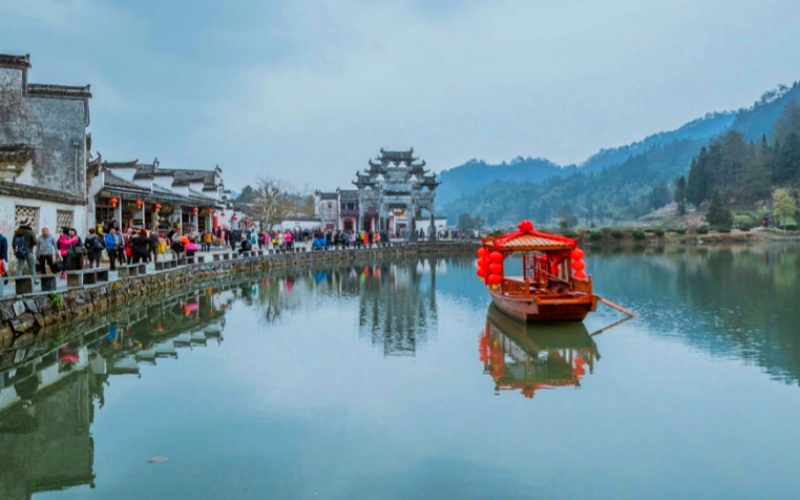
Hu Wenguang's Memorial Archway
At the main entrance, the first thing to see is Hu Wenguang's memorial archway, built in the sixth year of Wanli (1578 AD) of the Ming Dynasty(1368-1644), which is magnificent and represents the prominent position of the Hu family. The whole memorial archway is carved from the local "Yixian County Green" marble. There are five floors on the top, and each floor has different exquisite stone carvings. Next to the archway is Mingjing Lake, where you can take photos of the reflection of Huizhou architecture.
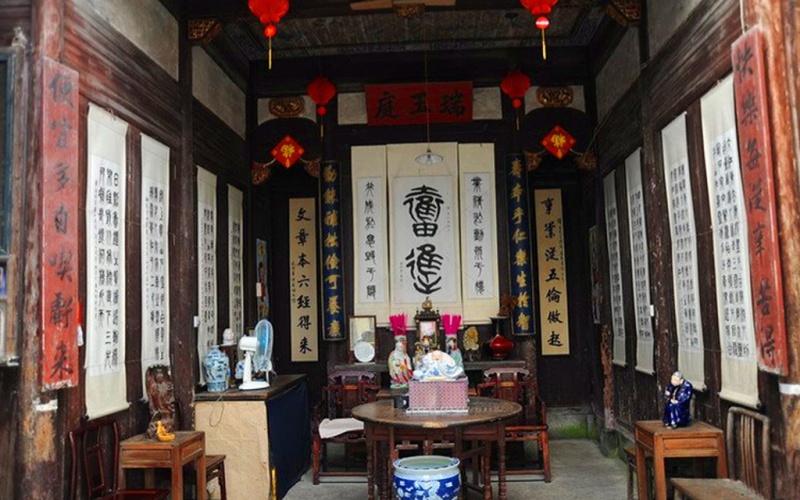
Ruiyu Hall (Ruiyuting Old Mansion)
Entering the village, we arrived at Ruiyu Hall, located at the intersection of Henglu Street. This is a representative Huizhou merchant residence built during the Emperor Xianfeng period of the Qing Dynasty(1645-1911). Interestingly, there are couplets inside, which not only tell the truth of Huizhou merchants doing business, but also contain a philosophy of handling affairs.
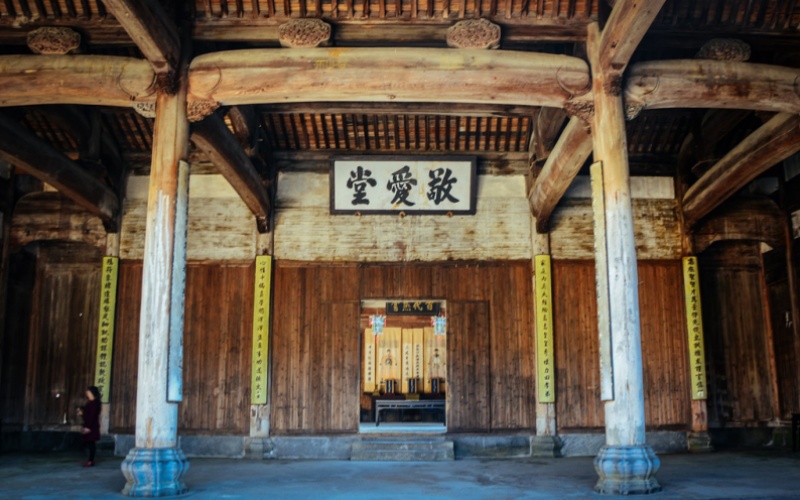
Jing'ai Hall
Heading east and crossing the front stream, the Jing'ai Hall on the east bank was first built during the Wanli period of the Ming Dynasty(1368-1644) and rebuilt during the Qianlong period of the Qing Dynasty(1645-1911). It is the largest existing ancestral hall in the village. The Jing'ai Hall was a place for the Hu family to hold meetings, hold weddings, and teach and punish unruly descendants. The large "孝(filial piety)" character hanging inside the house is impressive. The "土(soil)" character on the "孝(filial piety)" is like a bowing person on the right half and a monkey on the left half, meaning that one must abide by filial piety in order to be human, and vice versa, it is like a monkey.
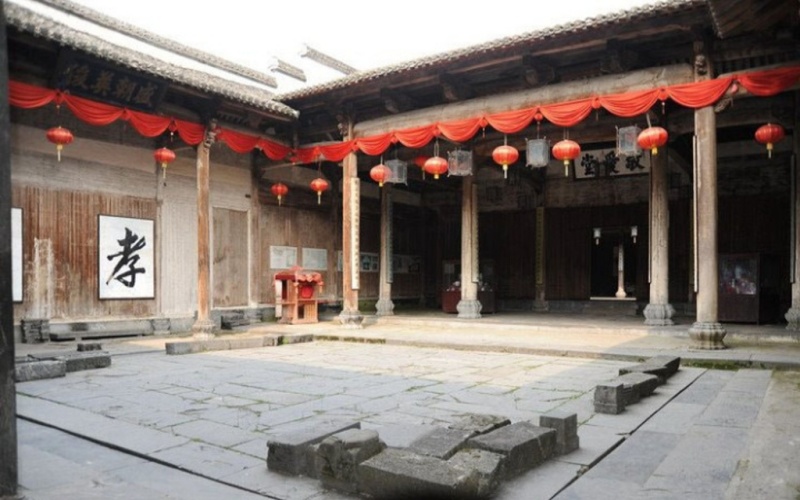 Shangde Hall
Shangde Hall
Continuing northeast along the front stream, the Shangde Hall upstream has a history of 400 years and is an ancient Ming Dynasty (1368-1644) house that still exists in the village.
Along the way from the entrance, you can also visit the Taoli Garden, a building that matches the Xidi Residence and the library, Hui Courtyard West Garden and East Garden, Dunren Hall, the residence of Hu Guan, the richest man in Xidi during the late Qing Dynasty(1644-1911). In addition, buildings such as Zouma Building, Xiu Building, and Zhuimu Hall are also highly distinctive Ming and Qing architecture in Xidi.
When to visit?
In March or April, visitors can see the beautiful scenery of white walls, black tiles, and rapeseed flowers complementing each other, but to avoid the Qingming Festival, there are too many tourists.
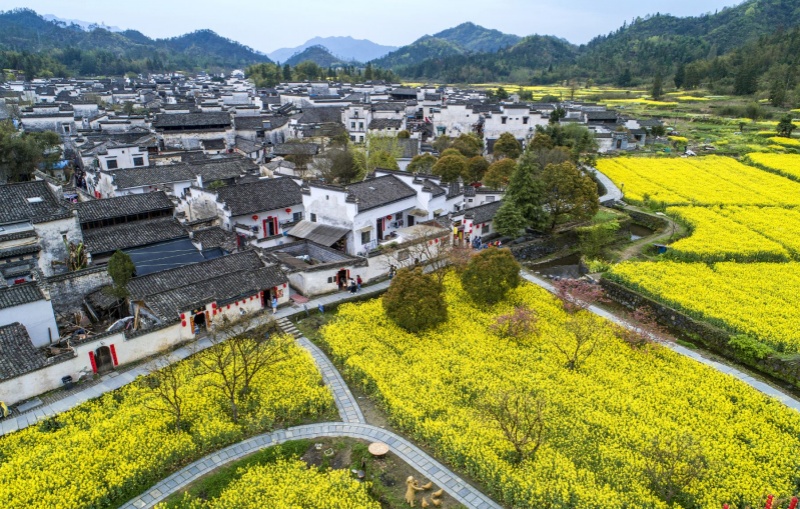
The degree of commercialization of Xidi is relatively high. Many local families have opened farmhouses, and some are carrying burdens to sell snacks on the street. You can taste Huizhou specialty food, including Laba tofu, Shaobing (Baked cake in griddle), bamboo shoots, hairy tofu and stinky mandarin fish introduced in the TV program China on the Tongue.
If you want to enjoy the tranquility of the ancient village, you can stay for a few nights.
Travel Tips
Address: Xidi Village, Xidi Town, Yi County, Mount Huangshan City
Phone: 0559-5154030
Official website: http://www.chinaxidi.com.cn
Opening hours: All day round the year
Ticket price: CNY 104
